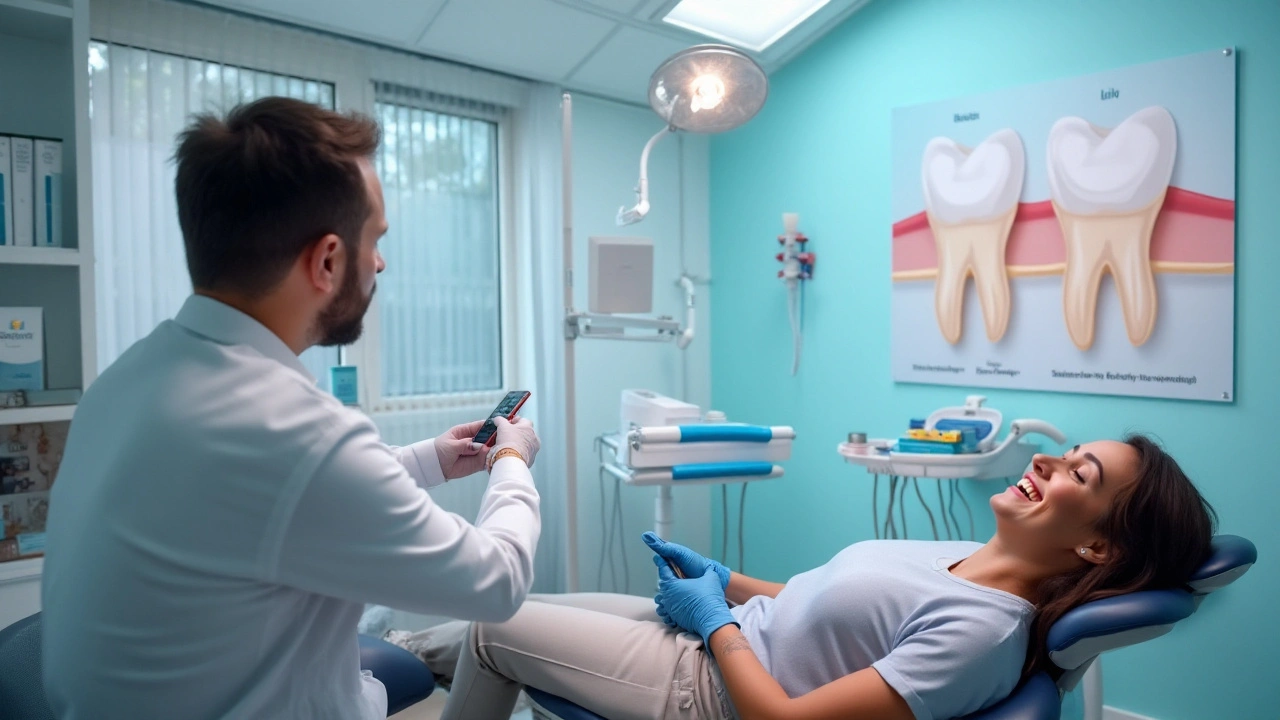In the world of chemistry, some elements often remain in the shadows of their more famous counterparts. However, strontium, a naturally occurring element, has managed to carve out a unique place for itself thanks to its diverse applications. From enhancing the strength of your toothpaste to serving as a key ingredient in dietary supplements, strontium plays a fascinating role in our daily lives.
Many people may not realize it, but strontium can be an unsung hero when it comes to maintaining oral health. Its contribution to strengthening the enamel and reducing the sensitivity of teeth makes it a valuable ally in dental care products. As we further delve into its abilities, you will discover that strontium is also crucial in nurturing bone health through its presence in certain dietary supplements.
Beyond personal care, strontium finds its purpose in industries like manufacturing and health, opening up a range of opportunities for innovation. It's important, however, to be aware of the balance between its benefits and any potential risks, which are essential to consider if you're thinking about incorporating strontium into your regimen.
- The Role of Strontium in Dental Care
- Strontium as a Dietary Supplement
- Industrial Applications of Strontium
- Potential Risks and Considerations
The Role of Strontium in Dental Care
Strontium has become a fascinating element in the realm of dental care, known for its unique ability to enhance the strength and resilience of our teeth. The incorporation of strontium benefits into toothpaste formulas isn't just a modern marketing tactic but is backed by science that underscores its efficacy in promoting oral health. Strontium works by integrating into the structure of tooth enamel, fortifying it against acid erosion commonly caused by foods and beverages we consume daily. This protective barrier can significantly reduce the risk of cavities, which is a much-needed relief in our sugar-laden world.
Interestingly, strontium resembles calcium in its chemical properties, which allows it to take the place of calcium in the mineral matrix of bone and teeth. This similarity facilitates the remineralization process, where minerals are redeposited in the enamel layer, crucial for maintaining tooth integrity. Not only does strontium help protect against decay, but it also plays a role in reducing tooth sensitivity, a common issue that affects many individuals. By blocking the transmission of stimuli to the nerves within the dentin, strontium offers an added line of defense against discomfort.
Research has shown that regular use of products containing strontium can lead to noticeable improvements in oral health. A study conducted by the American Dental Association found that toothpaste fortified with 10% strontium chloride effectively lowered dentin hypersensitivity.
"The incorporation of strontium into dental products has provided patients with a significant tool to combat tooth sensitivity while also promoting overall dental wellness," notes Dr. Sarah Mitchell, a leading researcher in dental sciences.Many users of strontium-infused oral care products report not only an improvement in sensitivity but also a tangible sense of strengthened enamel, bringing peace of mind with every brush.
For those considering the use of strontium-containing products, it is worth noting the ease of integrating them into your existing dental hygiene routine. These products come in various forms, including toothpaste and mouth rinses, designed for daily use alongside regular brushing and flossing practices. However, as with any health-related product, it's wise to consult with a dental professional to ensure it aligns with your specific oral health needs. This proactive approach can help tailor dental care to better protect against the unique challenges your teeth may face.
A peek into the dental aisle of most supermarkets will reveal an array of products that highlight the inclusion of strontium, often marketed with terms like 'sensitivity relief' or 'enamel strengthening.' Yet, beyond the advertising, the science behind how strontium uses impact oral health remains compelling. As more research continues to unfold, the understanding of strontium's full potential still expands, paving the way for innovative solutions in dental care.

Strontium as a Dietary Supplement
In the realm of nutritional aids, strontium has been gaining recognition for its potential benefits in supporting bone health. Historically, this element has been utilized in various formulations designed to strengthen the skeletal system, which can be particularly beneficial for individuals facing risks of osteoporosis. Osteoporosis, a condition characterized by weakened bones and increased fracture risk, is a growing concern in aging populations. It is believed that strontium plays a role by mimicking calcium’s properties, which allows it to incorporate into bone tissue, potentially enhancing bone density and strength.
The specific role of strontium in human health primarily encompasses its ability to stimulate bone-building cells called osteoblasts, while concurrently inhibiting the activity of cells that break down bone tissue, known as osteoclasts. This unique dual action has made strontium a focal point of research studies aimed at uncovering its full potential. While more research is needed to establish comprehensive guidelines, promising results from various trials have sparked interest in the scientific community. The European Society for Clinical and Economic Aspects of Osteoporosis delivers some promising data showing that strontium ranelate, a compound often used in related supplements, could lead to a significant reduction in vertebral and non-vertebral fractures.
Amidst these findings, people interested in adding strontium into their dietary routine should seek advice from healthcare professionals. Consulting a doctor or a dietitian can help assess the suitability and safety of incorporating strontium-based supplements into one's lifestyle. Moreover, it’s essential to consider factors such as existing medical conditions and concurrent medication usage that may influence the outcome or potential side effects. Strontium's influence on bone metabolism necessitates careful administration due to its ability to interact with calcium absorption and other bodily processes.
"Strontium offers a unique approach to bone health, providing dual benefits through both osteoblastic stimulation and osteoclastic inhibition," states Professor Maria Reginster in a recent osteoporosis report.
Manufacturers often suggest taking strontium supplements apart from calcium-containing foods or supplements so that both minerals can work independently to optimize their benefits. A well-rounded understanding of nutritional needs, including proper intake of calcium, vitamin D, and other vital nutrients, can significantly complement the positive effects of strontium. As with any dietary change, paying attention to the sources and composition of supplements is crucial to maximize their benefits safely.
For the data enthusiasts, here's a brief look at one of the studies highlighting the effectiveness of strontium ranelate in fracture prevention:
| Study Period | Patient Group | Fracture Reduction |
|---|---|---|
| 3 Years | Postmenopausal Women | 15% Vertebral Fractures |
| 3 Years | General Population | 19% Non-vertebral Fractures |
The promising outcomes of strontium supplements in enhancing bone density underscore their potential value as an integral part of bone health strategies. As the quest for healthier bones continues, strontium remains a compelling subject of exploration, offering hope for individuals seeking to maintain their structural integrity as they age.

Industrial Applications of Strontium
Among its many roles, strontium is a staple in several industries that thrive on its unique physical and chemical properties. One of its prominent uses is in the production of glass for color television and computer monitors. Strontium compounds, particularly strontium carbonate, serve as a key component because they help to block X-ray emissions, a crucial aspect for the safety and longevity of these devices. The application in electronics isn't limited to screens; strontium ferrite is widely used in the manufacture of permanent magnets found in small motors, sensors, and loudspeakers.
Another significant area where strontium finds use is in the realm of pyrotechnics. The brilliance of red flames in fireworks owes much to strontium salts, chiefly strontium nitrate and strontium carbonate. These compounds are celebrated for their ability to produce vivid red hues, offering the perfect solution for firework designers aiming to create stunning displays. Beyond this dazzling application, strontium's role extends to refining zinc using strontium hydroxide, thereby boosting the efficiency of the zinc extraction process. This intersection with metallurgical practices underscores its diverse industrial utility.
Interestingly, strontium is utilized in the field of metallurgy as an additive for aluminum and magnesium alloys. These alloys, when treated with strontium, exhibit enhanced mechanical properties such as increased tensile strength and improved elongation, making them ideal for applications in the aerospace and automotive sectors. It's fascinating to see how such a small modification can lead to substantial improvements in performance, transforming the way materials are used in technology-driven environments.
In addition to these robust applications, strontium also has a role in the production of ferrite magnets and fluorescent lights. Incorporating strontium in fluorescent lights allows them to emit a brighter, whiter light, making them more efficient for use in households and industries alike. The incorporation of strontium in these applications indicates its omnipresence and the reliance of modern technologies on this adaptable element. Indeed, the benefits and applications of strontium within industrial sectors keep expanding as it cements its position as a multifaceted component in varied processes.
"Strontium's contribution to technology goes beyond its visible applications; its integration in glass, alloys, and environmental protection illustrates its critical role in innovation," remarked a scientist from a leading research institute on materials. This sentiment embodies the truth that strontium's presence is subtle but far-reaching, influencing the way industries evolve and adapt to new challenges. As research continues, there is no doubt that its applications will widen, presenting new avenues for growth and sustainability.

Potential Risks and Considerations
Exploring the myriad uses of strontium is crucial, but understanding its potential risks is equally important. When used in products like toothpaste and dietary supplements, there are certain considerations to keep in mind. Strontium, although beneficial in many aspects, should be incorporated into our lives with caution. Long-term use or exposure, especially at higher doses, can lead to unexpected consequences. It's essential to be informed about these potential risks and weigh them against the benefits strontium can offer.
Although strontium mimics calcium and can be beneficial for bone health, especially in post-menopausal women, it can also displace calcium in the bones. This could potentially alter bone structure if not monitored correctly. Efforts to measure the safe levels of strontium are ongoing, and it remains important for consumers to rely on established guidance and medical advice when considering strontium supplements. Regular health check-ups and consultations can help in determining appropriate dosages and monitoring any unforeseen side effects.
Additionally, concerns have been raised about the long-term use of strontium in dental applications. While it helps to reduce tooth sensitivity effectively, some professionals caution that daily use should be tailored to individual needs. Overuse without professional oversight could potentially lead to enamel erosion. As such, consulting with a dentist before switching or starting any strontium-enriched dental product is strongly advised. This personalized approach ensures that users benefit without inadvertently causing harm.
Potential Environmental Impacts
It's also crucial to address the potential environmental implications of strontium uses. In its industrial applications, strontium needs to be managed responsibly to avoid environmental contamination. Improper disposal or accidental spills can lead to strontium seeping into soil and water systems, potentially affecting both ecosystems and human health. While regulations exist to manage such risks, stakeholders must remain vigilant to safeguard our environment.
“Strontium plays a dual role in modern applications; its benefits are vast, yet awareness of its impact is essential for sustainable use,” says noted environmental scientist Dr. Alicia Randolph.
Keeping an eye on these risks does not undermine the utility of strontium but rather encourages a balanced and knowledgeable application of its benefits. The push for sustainable practices in handling and disposing of strontium will ensure that this valuable element continues to be a safe and effective part of our daily lives. Careful regulation and personal responsibility can lead us toward a more balanced integration of strontium into our myriad contemporary applications.


scott bradshaw
January 23, 2025 AT 01:17Great, another element to hype up.
Crystal Price
January 24, 2025 AT 05:04Strontium is like a quiet hero in our daily routine. It sneaks into toothpaste and whispers strength to our enamel. The way it eases sensitivity feels almost magical, a small miracle for those who wince at cold drinks. And when you think about bone health, the element becomes a steadfast ally, guarding us against the silent thief of osteoporosis.
Murhari Patil
January 25, 2025 AT 08:51Behind the glossy labels lies a hidden agenda, and strontium is the front‑line operative. Manufacturers push it as a miracle, but who watches the long‑term fallout? The silent substitution of calcium may be a subtle maneuver by unseen forces. Every fluoride toothpaste and supplement could be a test of our trust in corporate science. Stay alert, question the hype before it seeps into your marrow.
kevin joyce
January 26, 2025 AT 12:37Strontium’s role in biomineralization invites a deeper reflection on the interface between elemental chemistry and physiological homeostasis. Its ionic radius, marginally larger than calcium, enables it to occupy lattice sites within hydroxyapatite, thereby modulating crystal growth kinetics. By integrating into the enamel matrix, it confers a measurable increase in microhardness, a fact substantiated by nano‑indentation studies. Moreover, the element’s affinity for the dentin‑pulp complex reduces hydraulic conductance, translating to clinically observable desensitization. In the skeletal arena, strontium stimulates osteoblastic activity via the calcium‑sensing receptor, while concurrently attenuating osteoclastic resorption through RANKL inhibition. Longitudinal trials have reported a 10‑15% reduction in vertebral fracture incidence among post‑menopausal cohorts receiving strontium ranelate. Yet, the pharmacokinetic profile reveals competitive inhibition of calcium absorption, mandating careful timing of supplementation relative to dietary calcium intake. Industrially, its incorporation into ferrite magnets exploits its favorable magnetic anisotropy, enhancing coercivity in compact motor assemblies. The pyrotechnic sector leverages strontium nitrate for its saturated red emission, a spectral signature prized in aerial displays. Environmental considerations arise from mining tailings, where leaching of soluble strontium salts can perturb aquatic ionic balances. Regulatory frameworks thus enforce strict effluent limits to mitigate bioaccumulation risks. From a materials science perspective, alloying strontium with Al‑Si systems refines grain structure, yielding superior tensile properties-a boon for aerospace components. In fluorescent lighting, strontium‑doped phosphors shift emission toward the blue‑green region, improving luminous efficacy. Despite these benefits, chronic exposure at supratherapeutic doses may precipitate ectopic calcification, underscoring the necessity of dose‑response vigilance. Ultimately, strontium exemplifies a dual‑edged sword: a catalyst for innovation tempered by the responsibility of judicious application.
michael henrique
January 27, 2025 AT 16:24The United States has always championed scientific advancement, and strontium is no exception. Its inclusion in dental products demonstrates American ingenuity in public health. While some overseas sources hype it without data, we rely on rigorous FDA studies before endorsing any additive. The balance of benefit versus risk is carefully evaluated by our own experts, not by foreign marketing gimmicks.
Jamie Balish
January 28, 2025 AT 20:11Hey everyone, just wanted to throw some positivity into the mix! 🌟 Strontium is a fascinating element that quietly does a lot for us, from making our smiles brighter to strengthening our bones. It’s amazing how something you can find in a tube of toothpaste can have such a big impact on daily comfort. The research on bone density looks promising, especially for those of us wanting to stay active as we age. And let’s not forget its cooler side-those spectacular reds in fireworks owe a lot to strontium salts. It’s a reminder that science isn’t just lab coats; it’s the fireworks lighting up our sky and the confidence we feel when we bite into an ice‑cream without wince. So next time you grab your toothbrush, think about the tiny atomic heroes doing their job. Keep smiling, stay strong, and enjoy the show! 🎉
Jeff Bellingham
January 29, 2025 AT 23:57While the discussion surrounding strontium is extensive, it warrants a measured appraisal. The empirical evidence supporting enamel reinforcement is modest, and the clinical significance in fracture reduction remains under scrutiny. It is advisable to consult dental professionals before adopting any new oral regimen predicated upon this element.
Matthew Balbuena
January 31, 2025 AT 03:44i think strontium is kinda cool but also kinda confusing. its in toothpaste and stuff but u gotta be careful not to overdo it. also watch out for the enviro impact if too much gets dumped. stay safe & enjoy the red fireworks!
michael abrefa busia
February 1, 2025 AT 07:31Strontium is a solid addition to dental care 😊. It helps with sensitivity and keeps teeth strong. Just remember to follow the dosage recommendations! 👍
Bansari Patel
February 2, 2025 AT 11:17When we contemplate strontium, we confront a paradox: an element that bolsters our bodies while potentially unsettling ecological equilibria. The philosophical tension mirrors our own struggle to harness progress without compromising harmony.
Rebecca Fuentes
February 3, 2025 AT 15:04Strontium’s applications across dental, nutritional, and industrial sectors exemplify the interdisciplinary nature of modern scientific endeavors. It is essential that regulatory agencies maintain vigilant oversight to ensure public safety.
Jacqueline D Greenberg
February 4, 2025 AT 18:51Hey folks, just a quick heads‑up: if you’re trying out a new strontium toothpaste, give it a couple weeks before deciding if it works for you. Everyone’s teeth react differently, so patience is key!
Jim MacMillan
February 5, 2025 AT 22:37One must acknowledge the sophisticated chemistry underpinning strontium’s utility, yet remain circumspect about its broader ramifications. 🚀
Dorothy Anne
February 7, 2025 AT 02:24Let’s keep the conversation uplifting! Strontium can be a game‑changer for bone health, especially when paired with vitamin D and regular exercise. Stay motivated, stay healthy!
Sharon Bruce
February 8, 2025 AT 06:11Strontium? Sure, why not 🙃. Just don’t go overboard.
True Bryant
February 9, 2025 AT 09:57From a regulatory standpoint, the pharmacodynamics of strontium ranelate demand rigorous phase‑III trial validation to substantiate its osteoprotective claims. Meta‑analyses have indicated a modest relative risk reduction in vertebral fractures, yet heterogeneity across study cohorts raises concerns about external validity. Moreover, the element’s competition with calcium at the intestinal transporter level necessitates a refined dosing schedule to mitigate hypocalcemia risk. Clinicians should therefore integrate serum calcium monitoring into treatment protocols, aligning with best practice guidelines. In industrial contexts, strontium’s role as a fluxing agent in aluminum casting improves grain refinement, reducing porosity and enhancing mechanical resilience-a non‑trivial benefit for aerospace component fabrication. Nevertheless, the environmental persistence of strontium salts, particularly in aquifer systems adjacent to mining operations, mandates robust effluent treatment strategies. As such, a balanced appraisal of strontium’s advantages against its ecological footprint is indispensable for informed policy development.